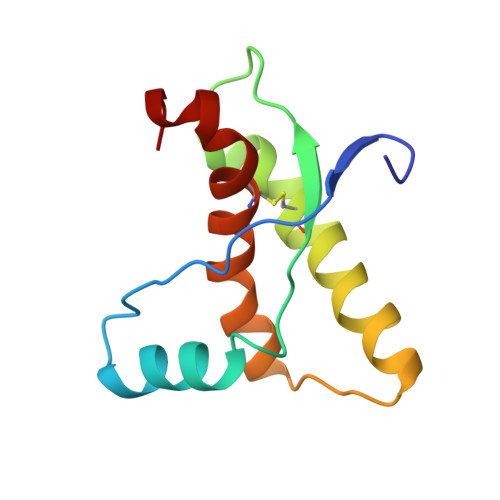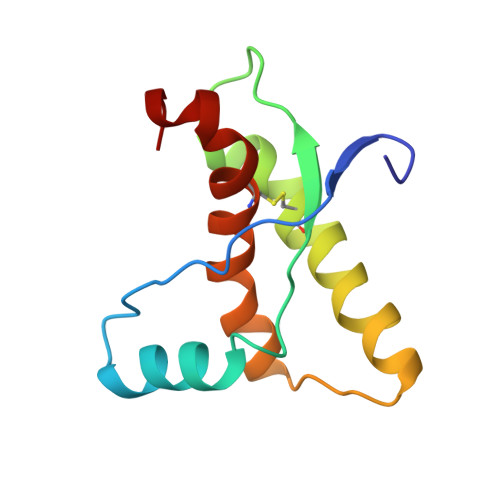NMR structure of the mouse prion protein domain PrP(121-231).
Riek, R., Hornemann, S., Wider, G., Billeter, M., Glockshuber, R., Wuthrich, K.(1996) Nature 382: 180-182
- PubMed: 8700211
- DOI: https://doi.org/10.1038/382180a0
- Primary Citation of Related Structures:
1AG2 - PubMed Abstract:
The 'protein only' hypothesis states that a modified form of normal prion protein triggers infectious neurodegenerative diseases, such as bovine spongiform encephalopathy (BSE), or Creutzfeldt-Jakob disease (CJD) in humans. Prion proteins are thought to exist in two different conformations: the 'benign' PrPcform, and the infectious 'scrapie form', PrPsc. Knowledge of the three-dimensional structure of PrPc is essential for understanding the transition to PrPsc. The nuclear magnetic resonance (NMR) structure of the autonomously folding PrP domain comprising residues 121-231 (ref. 6) contains a two-stranded antiparallel beta-sheet and three alpha-helices. This domain contains most of the point-mutation sites that have been linked, in human PrP, to the occurrence of familial prion diseases. The NMR structure shows that these mutations occur within, or directly adjacent to, regular secondary structures. The presence of a beta-sheet in PrP(121-231) is in contrast with model predictions of an all-helical structure of PrPc (ref. 8), and may be important for the initiation of the transition from PrPc to PrPsc.
Organizational Affiliation:
Institut für Molekularbiologie und Biophysik, Eidgenossische Technische Hochschule-Honggerberg, Zürich, Switzerland.
















